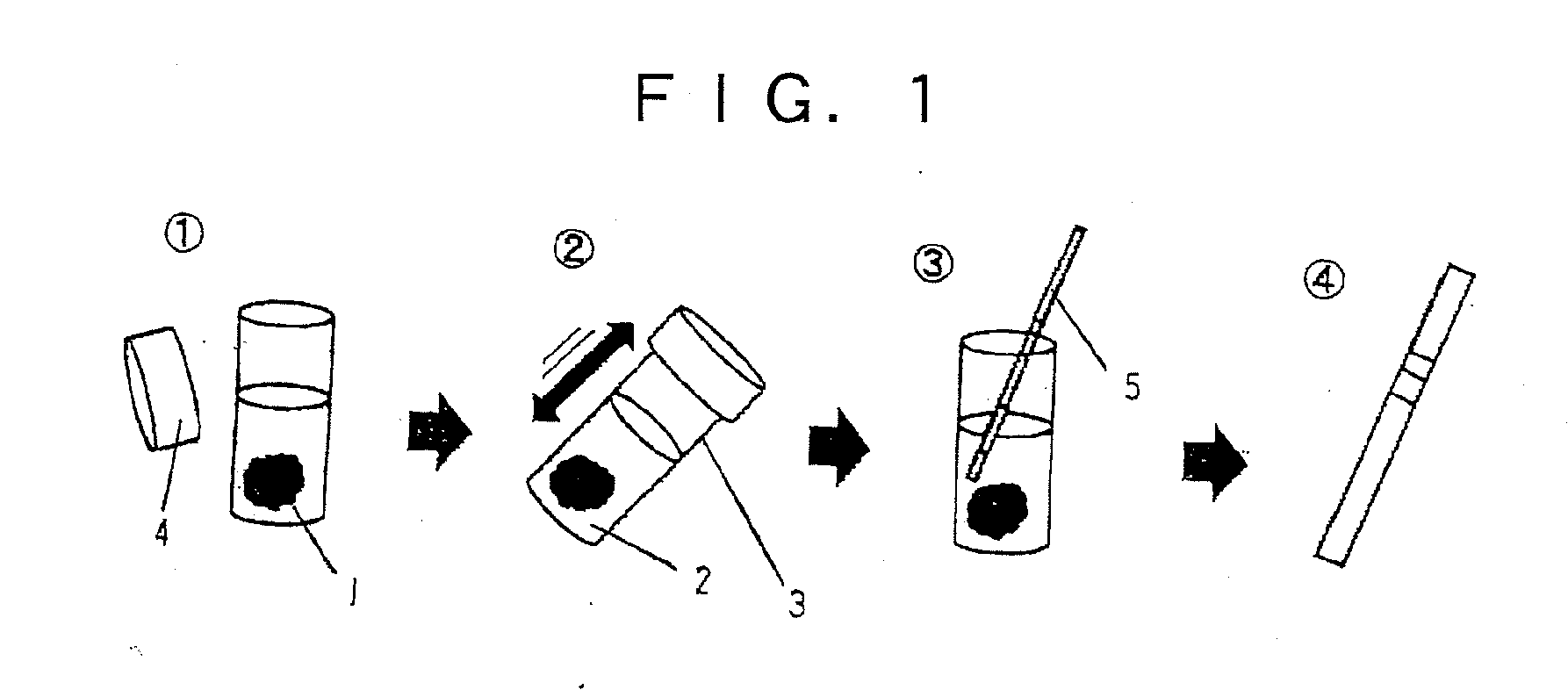Method of detecting raw pork and detection kit therefor
a detection kit and raw pork technology, applied in the field of raw pork detection in nonheated food and a detection kit therefor, can solve the problems of serious symptoms, no convenient detection, and examination of disguised food, such as fake brand beef, which has also been the subject of attention, and achieves the effects of convenient detection, convenient acquisition, and low cos
- Summary
- Abstract
- Description
- Claims
- Application Information
AI Technical Summary
Benefits of technology
Problems solved by technology
Method used
Image
Examples
example
[0077]The immunochromatography apparatus that is used in the present invention will be described in detail below, but it is merely an example, and the present invention is not limited thereto.
[0078]1. Production of a Reaction Portion on a Chromatography Medium
[0079]A goat-derived anti-porcine IgG antibody, diluted with a carbonate buffer (pH 7.5) containing 5% by weight of sucrose and 5% by weight of isopropyl alcohol to a concentration of 3.25 mg / mL, was applied onto a 25×2.5 cm nitrocellulose membrane (manufactured by Millipore, HF180) with an antibody coating machine (manufactured by BioDot), followed by drying at 42° C. for 60 minutes and then at room temperature overnight to produce a reaction portion on the chromatography medium.
[0080]2. Production of Labeling Material Solution
[0081]Goat-derived anti-porcine IgG antibody was diluted with a HEPES buffer (pH 7.5) to a concentration of 0.05 mg / mL. The diluted goat-derived anti-porcine IgG antibody (0.1 mL) was added to a gold col...
PUM
| Property | Measurement | Unit |
|---|---|---|
| temperature | aaaaa | aaaaa |
| temperature | aaaaa | aaaaa |
| concentration | aaaaa | aaaaa |
Abstract
Description
Claims
Application Information
 Login to View More
Login to View More - R&D
- Intellectual Property
- Life Sciences
- Materials
- Tech Scout
- Unparalleled Data Quality
- Higher Quality Content
- 60% Fewer Hallucinations
Browse by: Latest US Patents, China's latest patents, Technical Efficacy Thesaurus, Application Domain, Technology Topic, Popular Technical Reports.
© 2025 PatSnap. All rights reserved.Legal|Privacy policy|Modern Slavery Act Transparency Statement|Sitemap|About US| Contact US: help@patsnap.com

